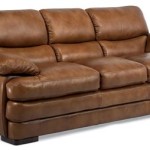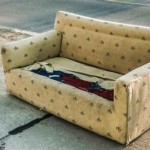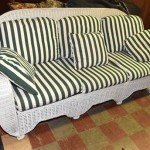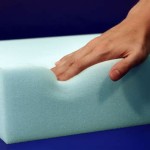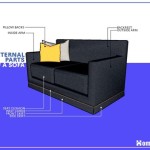How To Repair a Small Split in a Leather Sofa
Leather sofas, while durable and stylish, can succumb to damage over time. One common issue is the development of small splits or tears in the leather. Fortunately, minor splits can often be repaired at home, saving the cost of professional upholstery services. This article outlines effective methods for addressing small splits in leather furniture.
Before beginning any repair, it's important to assess the damage. Determine the size and depth of the split. This assessment will guide the selection of the appropriate repair method. Superficial scratches or scuffs can often be addressed with simple cleaning and conditioning. Deeper splits, however, require more intensive treatment.
Cleaning the affected area is the first step in any leather repair. Use a soft cloth dampened with a mild leather cleaner specifically designed for the type of leather on the sofa. Avoid harsh chemicals or abrasive cleaners, as these can further damage the leather. Gently wipe the split and the surrounding area to remove dirt, dust, and oils.
Once the area is clean and dry, the next step depends on the nature of the split. For very small, shallow splits, a leather conditioner can sometimes be sufficient. Conditioning the leather helps to hydrate and soften it, which can cause the split to close up naturally. Apply the conditioner according to the manufacturer's instructions, allowing it to fully absorb into the leather.
For slightly larger or deeper splits, a leather filler is often necessary. Leather fillers are designed to fill in gaps and create a smooth surface. Select a filler that matches the color of the sofa as closely as possible. Using a small spatula or palette knife, carefully apply the filler to the split, ensuring it fills the gap completely. Remove any excess filler and allow it to dry according to the product instructions.
After the filler has dried, the repaired area may need to be sanded lightly. This helps to blend the filler with the surrounding leather and create a seamless finish. Use a fine-grit sandpaper and sand gently in a circular motion. Avoid excessive sanding, as this can remove the leather's finish.
Once the repaired area is smooth, a leather adhesive may be necessary to secure the edges of the split together, preventing further tearing. Subtle application of a leather-specific adhesive to the underside of the tear, carefully aligning the edges, will ensure a strong bond. Allow the adhesive to dry completely before proceeding.
Following the application of filler and adhesive, the next step is to apply a leather sealant. This sealant acts as a protective barrier, preventing further damage and ensuring the longevity of the repair. Apply the sealant evenly over the repaired area, following the manufacturer's instructions.
The final step in the repair process is to apply a leather colorant if necessary. This is particularly important if the filler or adhesive has altered the color of the repaired area. Carefully select a colorant that matches the original leather color. Apply the colorant in thin, even coats, allowing each coat to dry completely before applying the next. This gradual application ensures a uniform and natural-looking finish.
For larger or more complex splits, professional upholstery services are recommended. Attempting to repair significant damage without the necessary expertise and tools can worsen the problem. Professional upholsterers have the skills and experience to repair major damage effectively, restoring the sofa to its original condition.
Regular cleaning and conditioning are essential for maintaining the health and appearance of leather furniture. This preventative maintenance helps to keep the leather supple and prevents it from drying out and cracking. Following the manufacturer's care instructions will extend the lifespan of the sofa and minimize the risk of future damage.
Different types of leather require different cleaning and conditioning products. It is important to identify the type of leather on the sofa before selecting any cleaning or repair products. Using the wrong products can damage the leather and void any warranties.
Testing any cleaning, conditioning, or repair product in an inconspicuous area of the sofa is always recommended. This allows for assessment of the product's effect on the leather before applying it to a more visible area. This precautionary measure helps to avoid unintended discoloration or damage.
While these methods are effective for repairing small splits, prevention is always the best approach. Protecting the sofa from direct sunlight, sharp objects, and excessive wear and tear can help to minimize the risk of damage and maintain its appearance for years to come.

How To Re A Ed Leather Couch 10 Secrets Success

Repairing Torn Leather A Quick And Dirty Guide Drsofa Com Blog

Fix Rips And Ing On A Leather Chair

How To Repair Ed Leather And Your Options Leatherneo

Repairing A Ripped Seam In Leather Couch Hometalk

Sofa Repairs With Leather Stitching Wefixanysofa Com

How Do I Repair A Small Rip In My Leather Couch Seat Hometalk

Home Dzine How To Re And Prevent Ed Leather

Sofa Repairs With Leather Stitching Wefixanysofa Com

Repairing A Tear In Leather Sofa

